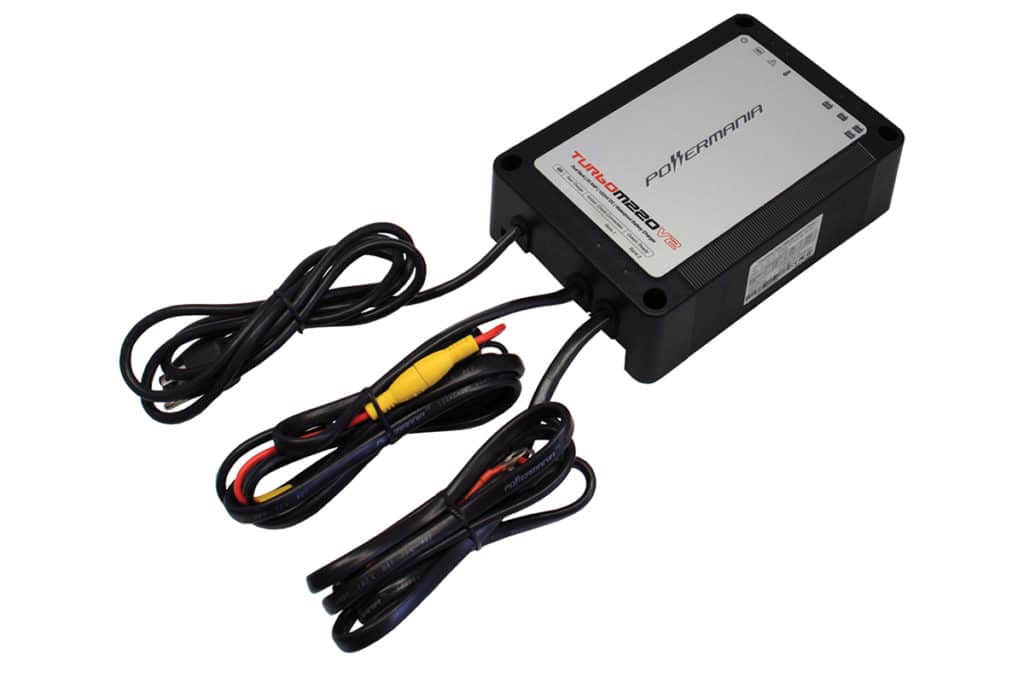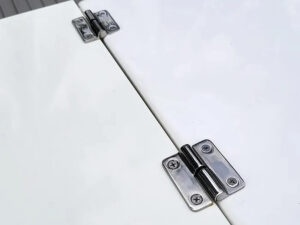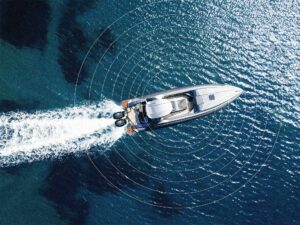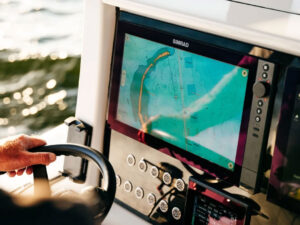
One of the most crucial aspects of your ship’s systems is maintaining healthy batteries. If they’re off, the performance of the electronics and electric appliances will suffer — if you’re lucky enough to start your engines. If you install a charger, follow the guidelines outlined by the American Boat and Yacht Council (ABYC) in section A-31. Also, heed this advice gleaned from Randy Wang of Powermania (powermaniausa.com) on what to look for in a marine battery charger.
Size Matters
Choose a charger with a rated output (amperage) that’s about 10 to 15 percent of the combined batteries’ capacity (ampere-hour or Ah). So if you need to recharge two Group 27 batteries (2 x 105 Ah = 210 Ah), a rated 20-amp charger is a good fit.
1. Bank Notes
A typical dual-bank, 20-amp charger has a 10/10 per leg configuration. That is, each output is capped at 10 amps maximum. But if a boat has one small starter-cranking battery and a larger house battery, they won’t discharge at the same rate. A 10/10-amp charger will likely waste one leg’s 10-amp power in idle because the cranking battery charges quickly, while a depleted house battery can only be simultaneously charged at the maximum current of 10 amps. A “smart” charger automatically transfers the idle charging current to the battery that needs more power.
2. Charge Rate
Theoretically, all 20-amp chargers should charge at the same rate, but they don’t. Many chargers lose output power (amps) as they heat up. For example, a 20-amp charger puts out 20 amps at first, but after 30 or 40 minutes into a recharge cycle, it gets warm and drops to 14 amps or lower. That would make it a “20A peak, 14A consistent” charger. A “20A-rated” charger consistently maintains 20 amps of output or close to that, so batteries recharge faster.
3. 120-Volt or 120/240-Volt?
Depending on where you boat, the AC shore power could be rated for either. It’s best to go with a charger that accepts both.
4. Durability
Epoxy-filled construction not only ensures true waterproofing, but it also eliminates potential shock damage, prevents condensation inside the charger and eliminates potential sparking.
Safety
In addition to complying with the ABYC’s safety standard, does the charger have other safety features? Powermania’s Turbo M220V2 has backup thermal sensors and a waterproof cooling fan.
Quick Tip: As per ABYC standard 31.5.5.7, never install a battery charger above batteries. The corrosive gases created during charging can ruin the charger or ignite and cause a fire.









